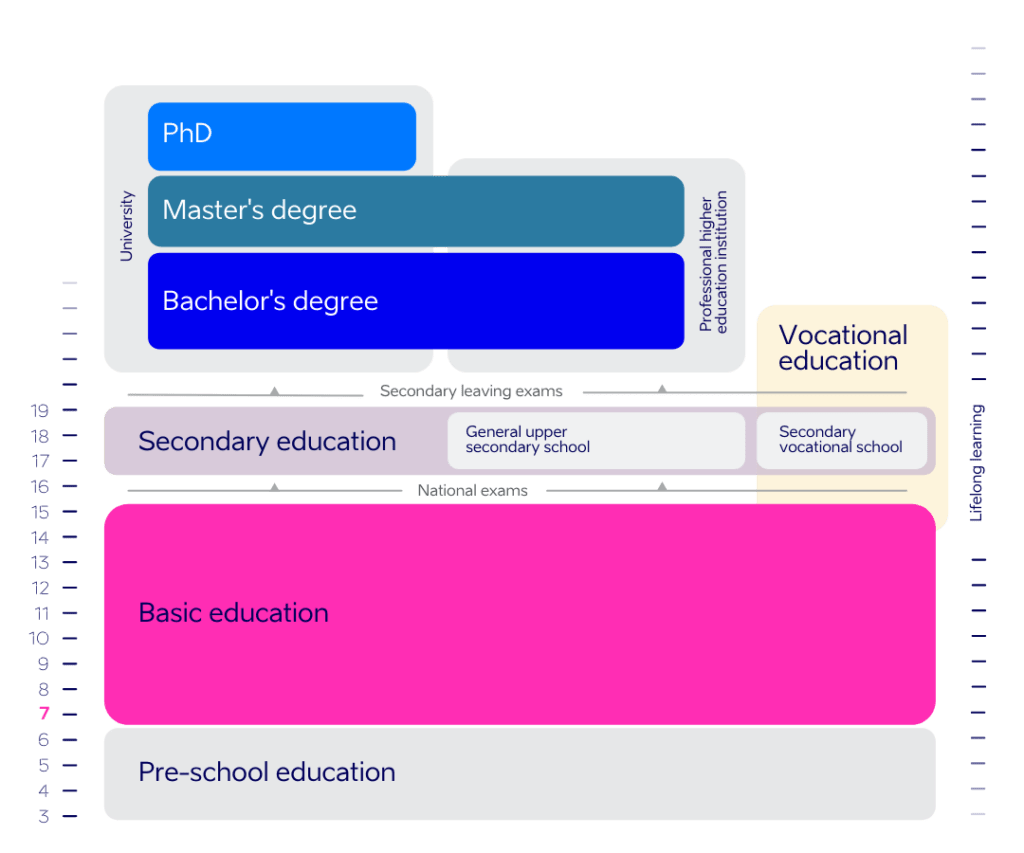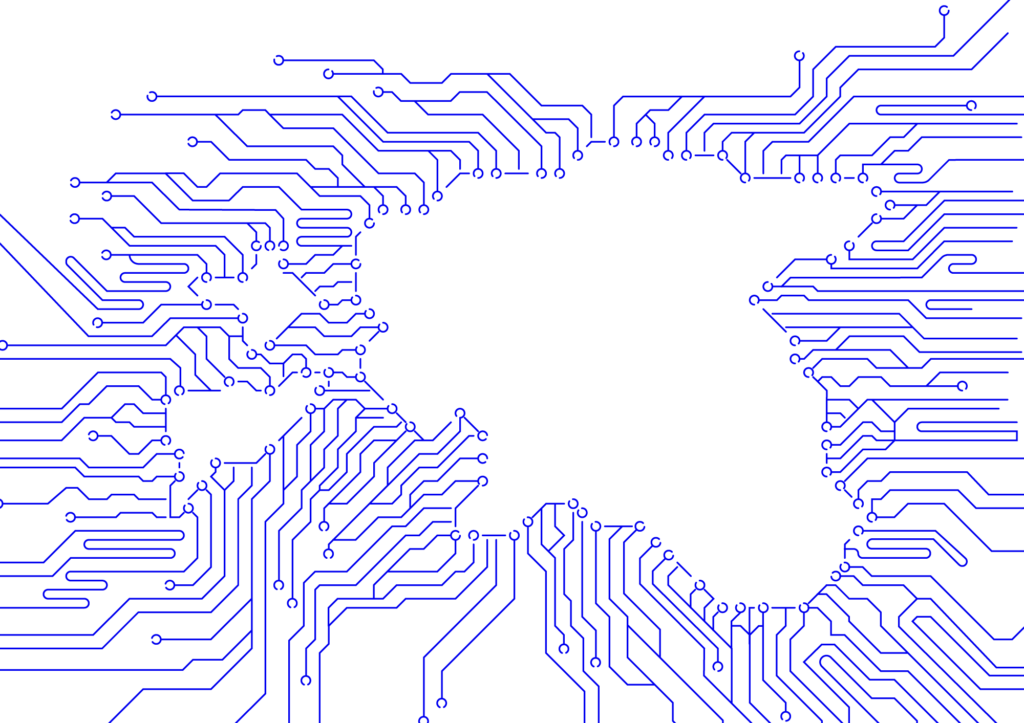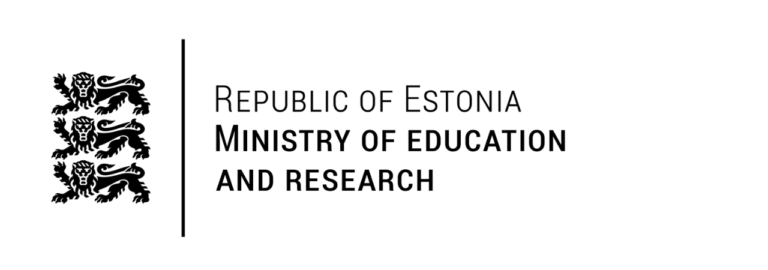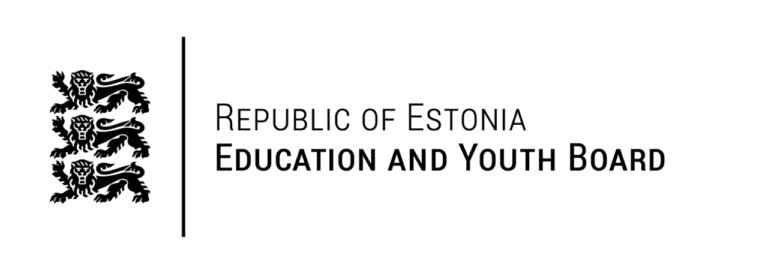“You’ll marvel at Estonia’s education system.” Writer and learning enthusiast Eva Keiffenheim shares key lessons she learned during her four-day study trip to learn more about education in Estonia.
The article was first published in Eva Keiffenheim's blog.
“At our schools, we don’t have homework,” 11-year old Ulvar told me during a school visit to Tallinn. I chuckled.
Estonian students outperform all other European countries in PISA results — by not having homework?
Ulvar wasn’t joking.
Compared to other PISA participating countries, Estonian students have short school days and spend little time on homework or 1-on-1 tutoring. While many other high-performing PISA countries, like Singapore or Korea, achieve high learning outcomes through volume, Estonian students learn a lot in little time.
And learning productivity is just one of the impressive things about Estonian schools.
Thanks to Teach For Austria alumni and very welcoming Teach For Estonia staff, I spent four days in Tallinn to learn more about the Estonian education system. This article distils the key lessons I learned from students, teachers, school principals, Teach For Estonia, the University of Tallinn, NGOs, and the Estonian Ministry of Education.
Estonia’s Education System at a Glance
“Estonia has become a successful role model in education worldwide. According to PISA 2018 Estonian general education is 1st in Europe and among the best in the world.” — Government of Estonia
Three-year-old children can attend pre-school. At age seven, children start basic school and finish at age 16. Students then take a standardised examination and choose between high school and vocational school.
What’s interesting: While early childhood education is not compulsory, 95% of three to seven-year-olds attend it. Parents have the right to affordable childcare and education starting at three years old. There’s a national curriculum for early childhood education that includes reading, mathematical, and motor skills.

Estonia’s education system is known for its excellent PISA scores: 1st in the world of financial literacy, 1st in digital learning, 4th in science, 5th in reading, and 8th in Math.
And when you dive deeper into OECD’s report, you find more exciting facts:
- Educational equity: Students’ socio-economic background has the lowest impact on reading performance in the OECD.
- System efficiency: Estonia outperforms other countries in overall PISA performance despite relatively low expenditure on education.
- Mindset: Estonian students rank first in growth mindset — the belief that success comes from effort instead of inherited intelligence.
But what contributes to these outcomes? Let’s take a look at three powerful factors of high-performing education systems.
1 – Data Transparency and Feedback Loops
“Missing feedback is one of the most common causes of a system malfunction.”
— Donella Meadows
Data is power. Who does and who doesn’t have access to it makes all the difference. Neither parents nor teachers nor policymakers can make well-informed decisions without data.
Yet, most countries don’t offer access to education data. System thinker Donella Meadows reveals why: “There is a systematic tendency on the part of human beings to avoid accountability for their own decisions. That’s why there are so many missing feedback loops — and why this kind of leverage point is so often popular with the masses, unpopular with the powers that be, and effective if you can get the powers that be to permit it to happen (or go around them and make it happen anyway).”
Estonian power-holders embrace transparency and accountability. The state uses internal and external evaluations to offer the publically available Education Statistics Portal, which compiles information on basic, general, secondary, vocational and higher education.
For each school, you can find data about student satisfaction, bullying rates, sick days, high-stakes testing results, government spending per student, and much more.
In addition to this dashboard, the Estonian Ministry of Education and Research publishes an annual review. The government uses the analysis for developing policies through an evidence-based approach (something even enshrined in their 2035 strategy).
But what happens to low-performing schools?
Neither finger-pointing nor closure.
The Ministry of Education and schools collaborate for improvement. Specific support programs offer guidance, chief analyst Sandra Fomotškin from the Education Ministry of Education told us. And as the next section will reveal, principals have a scope of action to transform their schools.
2 – Agency for Teachers and School Principals
“Agency is defined as the capacity to set a goal, reflect and act responsibly to effect change. It is about acting rather than being acted upon; shaping rather than being shaped; and making responsible decisions and choices rather than accepting those determined by others.”
— OECD
Agency for learners and educators is the greatest opportunity to transform learning institutions. And Estonian schools have the autonomy to affect change.
For example, school principals have decision-power about:
- Assessments (many schools don’t grade their students until the age of 12 but provide qualitative feedback as a guide and motivational tool for learning).
- Staffing decisions (headteachers can hire and fire teachers).
- The school’s curriculum (within the learning goals of a national curriculum).
- Teacher’s role and salary (while there is a fixed based, there’s to up it by 17% depending on teachers’ responsibility, e.g. as math coordinator or school developer).
- The lesson length (e.g., having fewer but longer lessons).
- The distribution between presence and home learning (e.g. kids spend four days at school and have one independent learning day at home).
We witnessed in two schools how these levels of autonomy translate into action.
At Pelgulinna Gümnaasium the school initiated and implemented a CBAM change process for implementing a learner-centric approach. Teachers see themselves as lifelong learners. “Students are not learning” translates to teachers being required (and supported) to improve their teaching.
Another example of autonomy is Avatud Kool, which was founded to bring the best pedagogical practices, such as language immersion, into schools. The school accepts 50% Russian-Speaking and 50% Estonian-speaking students, and both groups are taught in Russian, Estonian, and English.
“It is imperative to allow autonomy at every level in the education system to change it from an administrative institution to a learning institution.”
— Nadiem Makarim
3 – Evidence-based Teaching and Learning
“When one looks at the scientific evidence about how the brain learns and at the design of our education system, one is forced to conclude that the system actively retards education”
— Daisy Christodoulou
Most teachers nor students across the globe know how to learn. While learning science offers clear guidance, people continue to use ineffective teaching and learning techniques. For example, students often continue to reread or highlight, even though we know it’s a fruitless strategy. The problem? A missing link between research and teaching practice. Most teacher-training programs are not informed by evidence.
And if teachers don’t learn how to learn, how can we expect them to teach it to their students?
Estonia has recognised the potential of integrating learning science for a long time. As a result, metacognition and learning are enshrined in teaching curricula and applied in praxis. For example, Pelgulinna Gümnaasium’s key goal is that every student becomes a self-directed learner. There’s a subject called “learning how to learn”, where students learn how to set goals, plan time, as well as strategies for reading, memorising, and writing.
Key Challenges & Caveats
While Estonia does a lot of things right, some challenges remain:
- Teacher recruitment and retention. There’s a teacher shortage, and every fourth teacher quits school after the first year.
- Segregation between Russian- and Estonian-speaking schools. Russian-speaking students are often disadvantaged compared to their peers.
- Drop-out rates. 17% drop out of the system after nine years of compulsory education.
Moreover, there are two important caveats to keep in mind.
Estonia is a small country with 1.33 million inhabitants. In one of the conversations, I heard the Minister of Education is Facebook friends with most school principals — which decreases friction and enables direct and open communication but is challenging to scale.
Plus, Estonia has a relatively homogenous student body. For example, in 2017, there were only 59 refugees in Estonia. In contrast, in my class as a middle school teacher in Vienna, there were 25 students from 13 different nationalities (and mother tongues).
Final Thoughts
Education is the most powerful tool to change our societies for the better, something Estonia has realised for a very long time.
The country is a forerunner on the students, institution and system level by enabling data-driven decision making, equipping educators with agency, and including science-based principles in teaching and learning.
If there’s one thing I learned, it’s that education systems are not fixed. They can be redesigned and transformed for the better by all of us.







